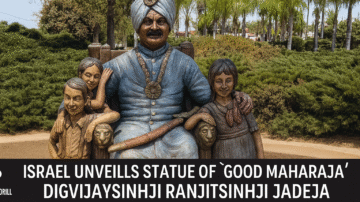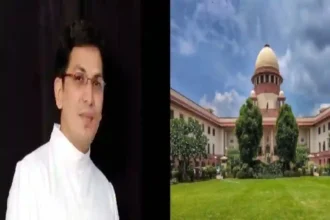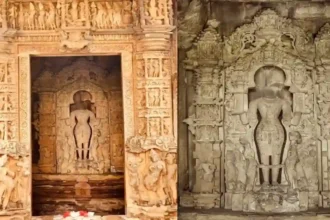
Haryana, India — In a stunning revelation that has sent shockwaves across the state, data from Haryana’s Parivar Pehchan Patra (PPP) scheme has exposed a rare and controversial social trend: 2,779 men in the state have more than one wife, with Nuh district recording the highest number of such cases.
This never before seen statistical insight was gathered from the state’s flagship digital family identity program, the PPP scheme, which aims to create a verified database of family units for effective welfare delivery. But what the data inadvertently uncovered is now sparking debates on polygamy, law, and social norms in the 21st century.
PPP Scheme Uncovers 2,779 Cases of Polygamy in Haryana
According to the shocking data:
- 2,761 men have two wives
- 15 men have three wives
- 3 men have more than three wives
This data, compiled through self declared entries in the state run PPP portal, points to a quietly existing culture of polygamy despite legal prohibitions under the Marriage Act for most communities.
And while many assumed polygamy was a thing of the past or restricted to very few communities under special circumstances, the data from Haryana proves otherwise.
District Wise Breakdown Nuh Tops the List
What’s even more sensational is the district wise breakdown, revealing that the phenomenon is not evenly spread across the state, but highly concentrated in specific regions:
| District | Number of Men with Multiple Wives |
|---|---|
| Nuh | 353 |
| Faridabad | 267 |
| Palwal | 178 |
| Karnal | 171 |
| Other Districts Combined | 1,810+ |
The Nuh district, which is often in headlines for lagging socio-economic indicators, has now topped another controversial chart highest number of men with multiple wives.
Legal and Social Shockwaves: Is Polygamy Back in Mainstream?
This PPP revelation is raising legal and ethical alarms across the country.
Under the Hindu Marriage Act, 1955, polygamy is strictly prohibited for Hindus, Jains, Sikhs, and Buddhists. It remains a punishable offense unless permitted under personal laws such as Muslim Personal Law, which allows up to four wives under strict conditions.
However, the public disclosure of this data via a state sponsored identity program has created a grey area: Is this an indirect acceptance or just a data anomaly?
Legal experts are now demanding scrutiny, questioning how such entries made it into official records without red flags.
If the government has registered these details without verification, it could amount to administrative negligence. If verified, it raises a serious question about parallel social structures existing in the state,” said a Supreme Court lawyer under anonymity.
What is Haryana’s Parivar Pehchan Patra (PPP) Scheme?
Launched by the Haryana government, the PPP scheme aims to assign a unique identity number to every family in the state, linking it with Aadhaar and government databases to streamline the distribution of welfare benefits.
This real time family database helps ensure accurate delivery of government schemes. However, the entry of multiple spouses under a single male head has turned into a startling expose of the social undercurrents in certain regions.
The PPP database now stands as a rare public document that exposes real household structures beyond what the census or surveys have ever revealed.
Political and Social Reactions Pour In
The revelations have triggered a storm on social media and heated reactions from political circles.
Opposition leaders in Haryana have accused the BJP led government of “institutionalizing illegal practices” through its faulty data entry processes.
Meanwhile, social activists have raised concerns about women’s rights, child welfare, and inheritance disputes arising from such family structures.
“This data should not be ignored. It is a red alert about rising cases of polygamy, possible forced marriages, and gender inequality in some parts of Haryana,” said a women’s rights activist from Faridabad.
What This Data Really Tells Us
The data might only represent the tip of the iceberg. Given the social stigma and legal risks involved in admitting to having multiple wives, the actual numbers could be even higher.
Moreover, questions arise:
Are these marriages registered under law?
Are women involved being given equal rights?
Are these cases symptomatic of broader social inequalities, poverty, or educational backwardness?
The concentration of such cases in backward regions like Nuh and Palwal suggests a deeper nexus of religious customs, poverty, and governance failures.
Why This Matters And What’s Next
As India pushes for uniform civil code (UCC) and legal uniformity in personal laws, this Haryana PPP data could become a case study of contradictions within governance and societal values.
The Haryana government is now under pressure to verify, clarify, and take action based on these disclosures.
If there’s a legal violation, it must be addressed. If not, the state must acknowledge this and engage with affected communities,” a senior bureaucrat stated off the record.
Meanwhile, the data continues to go viral, drawing eyeballs from across the nation.
Stay Connected with The News Drill for more updates. Stay informed. Stay updated. Stay Ahead.
Contact us: contact@thenewsdrill.com
Submit tip or story: editor@thenewsdrill.com













